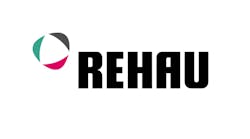BY ROBERT P. MADER of CONTRACTOR’s staff
TRENTON, N.J. — Goodyear hopes that its class-action settlement with New Jersey plaintiffs puts its Entran II problems behind it. Goodyear reached a settlement in Donato Galanti et al. v. The Good year Tire & Rubber Co. (November 2003, pg. 1). It appears, however, that homeowners with the defective hydronic radiant hose in other states will continue to fight against both Goodyear and the Galanti settlement.
Actually, the other litigants, who wish to remain anonymous, refer to the New Jersey settlement as the Cuneo Group, so named after the Washington law firm Cuneo, Waldman and Gilbert, which is the lead law firm in the settlement. Cynics might accuse Goodyear of “plaintiff shopping,” that is finding a law firm to represent the plaintiff’s class that is willing to settle for less money than a really aggressive law firm might demand.
The settlement agreement states that “the Parties have conducted a thorough examination and investigation of the facts and law relating to the matters set forth in the Complaints and have obtained pre-trial discovery regarding the claims and defenses asserted in this Action.” The agreement also states that “the Parties have engaged in extensive, arms-length negotiations extending for a period of approximately four months.”
Goodyear and the Cuneo Group reached agreement before the class-action suit was filed in Federal District Court here.
The lawyers began running advertising notices to homeowners and plumbing contractors in March, including in CONTRACTOR’s March issue (pg. 52). If a homeowner did not want to be included in the settlement, the notice gave a short “opt out” period deadline of May 7, 2004. After that date, homeowners with Entran II tubing are automatically members of the class. Homeowners have until Oct. 19, 2009, to file claims.
The settlement is for a minimum of $196 million and a maximum of $236 million.
Goodyear announced a $236 million settlement and said it will contribute $76 million. Another $120 million has to come from Goodyear’s insurance companies. The $40 million in contingent payments, $10 million a year, scheduled to be made from 2004 through 2007, depends on whether Goodyear hits its EBITDA targets.
The attorneys led by Cuneo stated in court filings that they would request attorneys’ fees equal to 30% of the settlement fund. If the final settlement fund amount is $196 million, the lawyers would get $58.8 million. The lawyers would also be reimbursed for their costs. In addition, payments out of the settlement fund would be administered by a court-appointed special master, who would need about $7.2 million to run the operation over five or six years. Each claim would have to be investigated and inspected, at an estimated cost of $5 million.
That would leave homeowners with about $125 million. If there are 15,000 homes with Entran II tubing (the number most commonly cited), that would average $8,300 per house.
In terms of the millions of feet of Entran tube that’s out there, the awards would run between $6.85 and $8.25 per ft. Homeowners who have prevailed over Goodyear in previous lawsuits have been awarded amounts as high as $62 per sq. ft. of heated space.
The settlement divides claims into two classes, Category I and Category II. Category II is more severe, such as homeowners who have experienced catastrophic failures of their heating systems and significant water damage.
The settlement actually establishes a per-foot dollar amount that it would cost to repair radiant tube installations. Those cost estimates are: in-slab, $64; staple-up, $38.40; exposed staple-up, $17.50; thin-set, $51.20; baseboard, $6.40; and snow melt, $38.40.
That doesn’t mean that homeowners would get that amount. Those dollar figures are for a maximum claim. The Cuneo settlement allocation plan notes that Category I claimants could receive a first payment of approximately 8% of their maximum claim and a final payment of about 18% of their maximum claim, a total of 26%.
Category II claimants could receive a first payment of approximately 20% of their maximum claim and a final payment of about 20% of their maximum claim, or 40% total.
The settlements exclude New England plaintiffs in the Payne v. Goodyear case that was filed in Federal District Court in Boston in 2001.
The New Jersey action is far from finished. A fairness hearing to determine if the settlement is equitable will not be heard by the District Court until Oct. 19. The lawyers will ask for approval of their attorney’s fees at a hearing Nov. 3.
Meanwhile, attorneys for plaintiffs in the Colorado state court class-action suit of Anderson v. Goodyear are trying to persuade the New Jersey U.S. District Court that it should exclude Colorado and New Mexico plaintiffs from the Cuneo settlement. They note that the first class-action against Goodyear was filed in Colorado in 1998. The also cite federal court precedent in class-action suits that certified classes that are already in state courts can be exempt from federal court class-action settlements.

